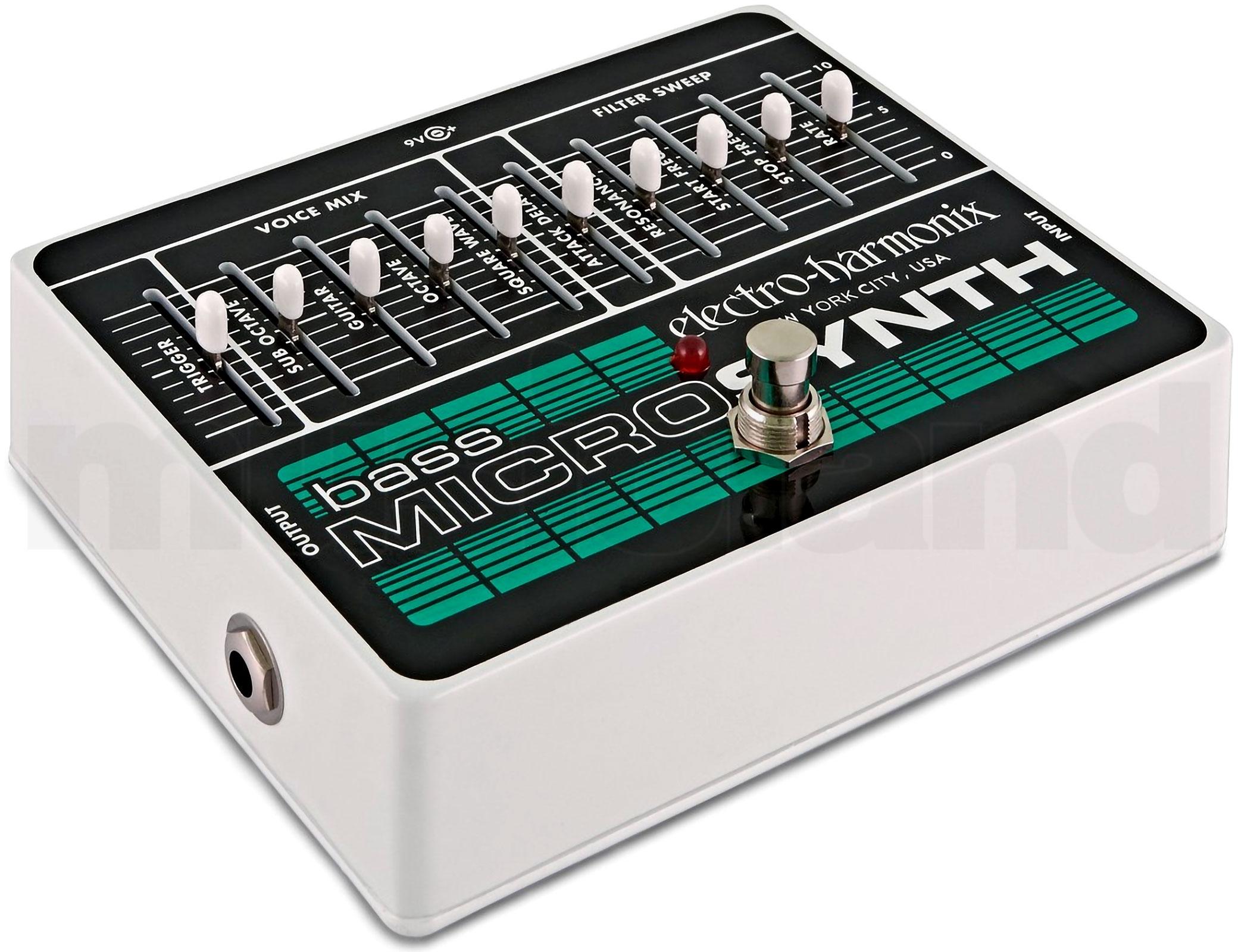

The LED will briefly flash orange in either mode of operation when you’re beginning to clip the input section of the effect. But a red LED signifies that you’re in PRESET mode, which allows you to recall one previously saved preset for each of the 11 separate synth voices. In one mode, affectionately referred to in the EHX documentation as WYSIWYG (“what you see is what you get”) mode, the LED state is green and the pedal reacts to your real time control tweaks and turns in other words, it functions like you would expect to be able to interact with most any pedal. Two modes of operation are possible with the Bass Mono Synth, which speaks to the inclusion of the PRESET footswitch to the left of the on/off BYPASS switch. The expression jack accepts a TRS ¼” from a typical passive expression pedal. There are also separate output jacks, labeled DRY and SYNTH, for those keen on experimenting with parallel signal processing on their boards. It’s kind of a cool touch to have independent level controls for both signal outs, rather than a blend, as it not only allows you to get the right mix of dry bass tone to wet synth vibe, but also gives you more control over the overall volume level of the pedal. DRY and SYNTH are each independent output volume controls, affecting exactly what they claim. EHX provides an expression pedal input, as well, which together with the CTRL knob can achieve quite a few tone-tweaking feats for real-time swells and filter frequency sweeps, as well as set-and-forget voicing options. The CTRL knob has multiple uses and functions differently, depending on which synth voice you’re using. Another control below this row, labeled TYPE, selects from 11 different synthesis voices. The Bass Mono Synth offers four controls across the top: DRY, SYNTH, SENS, and CTRL. Electro-Harmonix (EHX) and BOSS both have recent additions to the field of said sources of synthy goodness that you should know about. Some of us play some form of key bass ourselves, but for the rest, to cop those authentic, syrupy or sawtoothy textures, a good number of us stick to our strings and step on a synth effect, instead. “Let there by synth!” Of course, as bassists we’re all hyper-aware of the great synthetic bass sounds that have been used on recordings since the ‘60s, but especially up through the electro-funk, hip hop, and neo soul movements.
#EH BASS MICROSYNTH FULL#
But verily, those emulations became target tones in and of themselves, becoming new classics in the pantheon of requested and desired sonic traits, and now we’ve come full circle, playing some of those original instruments through emulators that are doing their best impressions of circuits meant to emulate us in the first place. But then there was technology, and … perhaps it was good? Technology sought to simplify the load-in, sound check, and payout scenarios of the live and recorded musical spheres, and emulated said instruments of yore – often, not very well. There were some other pretty old, bowed, stringed instruments, too. At first the output volume was so low, I wondered if I got a defective unit, then I realized either the Filter or Envelope section was completely deactivated and I had to activate one of them (forgot which) to get the effect volume up.In the beginning, there was bass.


You do need to play with the Filter and Envelope section to get the right amount of volume. You can use it as a Whammy pedal if you push the Direct Output slider all the way down and select the Bend Up or Bend Down function. For Wah/Filter you just have to be a bit careful as with any wah pedal, as it can pump out some serious highs that can pierce your ears in a hurry. I really like Freeze Volume because you can control the volume of the chord being frozen and sustained, and sustaining a new chord is as simple as backing off on the exp. There is a tremendous amount of functionality stuffed into the HOG - Wah and Filter with Exp Pedal (Wah and Filter actually do sound different), Freeze Gliss, Freeze Volume, etc. The pitch shifting is thus not comparable in smoothness and quality to Eventide, but it definitely has its own character which isn't always a badthingĪs stated by others, my Bass Microsynth (same as Microsynth, but for bass) cannot handle chords. The HOG works pretty well with chords, though if you play chords you may notice warbling with the generated upper pitches (eg.


 0 kommentar(er)
0 kommentar(er)
